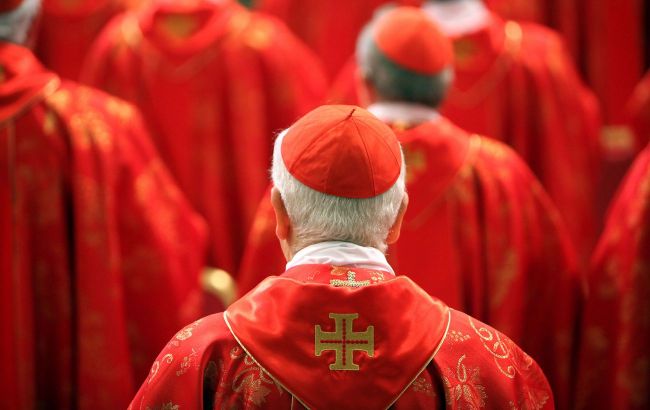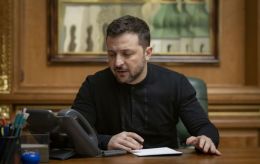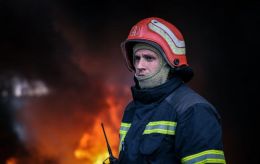Conclave begins in Vatican: How Catholic church elects new Pope
 Photo: How the new pope will be elected (Getty Images)
Photo: How the new pope will be elected (Getty Images)
Today, May 7, a conclave will begin in the Vatican. This is a special gathering of cardinals of the Roman Catholic Church who are to elect a new Pope, who will become the successor of the deceased Francis, according to The Guardian.
Who participates in the election
This year, the Pope will be elected by 133 cardinals who have arrived in the Vatican from all over the world. Among them: more than 50 cardinals are Europeans, mostly from Italy. Ten – from the USA, 23 – from Asia, 21 – from Central and South America, and 18 – from Africa.
They not only elect the new Pope but can also be candidates themselves. According to the rules, only those cardinals who are under 80 years old have the right to vote.
Before the start of the conclave, they take an oath to observe the secrecy of the ceremony.
How the election of the Pope takes place
First, the cardinals gather in St. Peter's Basilica for the mass Missa Pro Eligendo Romano Pontifice. Then they are locked in the Sistine Chapel, where the conclave will take place. From the moment of the command, extra omnes ("everyone out") remain in isolation until the end of the election.
During the conclave, cardinals are forbidden to read newspapers, use phones and the internet, or communicate with the outside world.
On the first day, one vote is held. On the following days – four times a day – two before lunch and two after. To become Pope, a candidate must receive 2/3 of the votes. If this does not happen after several stages, then one of the two candidates is elected by a simple majority.
How cardinals vote and how the world learns that the Pope has been elected
Cardinals vote at tables on which there are only pens and ballots with the words Eligo in summum pontificem ("I elect as Supreme Pontiff"). Then the ballots are folded in half and placed in a bronze urn.
The world learns about the election of the new Pope from a chimney that was installed the day before on the roof of the Sistine Chapel. Traditionally, a special mixture is added to the fire that colors the smoke accordingly: black – if the Pope has not been elected, and white – if he has been.
How long the conclave will last
The election can last from several hours to weeks. The longest conclave in history took place in the 13th century and lasted two years and nine months. Since the beginning of the 20th century, most conclaves have lasted two to three days.
What’s next
After the victory, the elected cardinal is asked whether he agrees to become the new pontiff. In case of an affirmative answer, he must choose a name for his pontificate. And the cardinals swear allegiance to the new Pope.
Then he goes into the so-called Room of Tears, where he changes clothes (just in case, three sizes of outfits are prepared) from the red "cardinals" to the white clothing of the Pope. Then the newly elected pontiff appears for the first time before the faithful on St. Peter’s Square.
Death of the Pope
On April 21, 2025, it became known that Pope Francis – the pontiff who headed the Catholic Church since 2013 – had died. He was 88 years old. According to the Vatican press service, the cause of death was a stroke, and before that, he had suffered from bilateral pneumonia.
Earlier, RBC-Ukraine reported about the last journey of Pope Francis – how, in the Vatican, thousands of faithful said goodbye to the pontiff.
What Pope Francis is remembered for
Pope Francis (Jorge Mario Bergoglio) was elected the 266th Pope on March 13, 2013. He became the first pontiff from Latin America.
Pope Francis's policy was aimed at helping the poor, protecting migrants, and fighting corruption. In particular, for the first time in history, an audit of the Vatican’s activities was conducted. The pontiff supported a reform to fight corruption and ordered the publication of an annual report on the financial operations of the Vatican Bank.
Also, the Pope launched the Click to Pray website and app, which allows people to pray at any time and in any place. In 2015, he issued the encyclical Laudato si’, dedicated to environmental issues and the fight against climate change.
What Pope Francis said about Russia’s war against Ukraine
After the beginning of the full-scale war, Pope Francis emotionally addressed the world with the words: “In the name of God, I ask you: stop the massacre.” He publicly condemned the killing of civilians, emphasizing that this violence has no strategic sense.
In January of last year, Francis, for the first time, directly condemned the actions of the Russian Federation. He recalled the “almost two-year full-scale war that Russia is waging against Ukraine, which has led to a large number of victims and massive destruction.”
On the occasion of the third anniversary of the full-scale invasion (in February 2025), Pope Francis called this date “a painful and shameful anniversary for all of humanity” and expressed solidarity with the Ukrainian people.
His last statement about the Russian-Ukrainian war was made on Easter, April 20, 2025. The pontiff said only the phrase: “Brothers and sisters, Happy Easter!” The rest of his blessing was read by one of his aides. It included words about Ukraine “devastated by war.”

